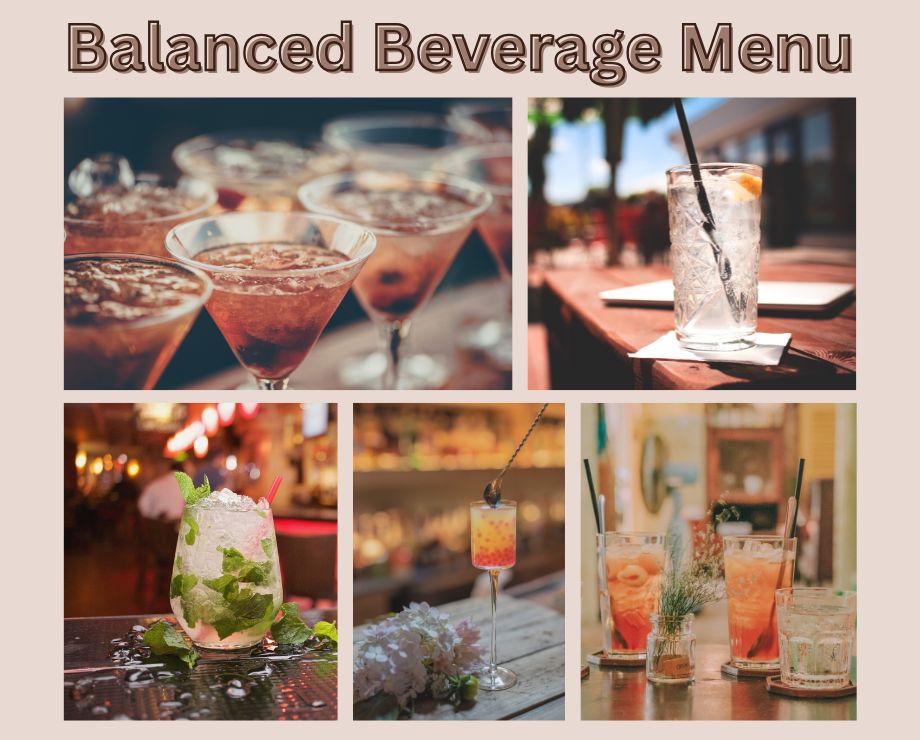A well-designed beverage menu does more than quench thirst; it drives profit, enhances customer experience and encourages repeat orders. For cafés, takeaways, restaurants and catering businesses, seasonality plays an even bigger role because drink preferences shift dramatically throughout the year.
Creating a balanced, all-season drinks menu ensures you are prepared for weather changes, customer behaviour patterns and trending flavours while maintaining cost-effective stock management.
Whether you run a small takeaway or a large-scale catering operation, this guide breaks down how to structure, rotate and optimise your drinks menu for every season.
Why Seasonality Matters in Beverage Planning?
Customers don’t want the same drinks all year. Hot summers boost cold drink sales, while winter encourages warm, comforting flavours.
However, beyond temperature, seasonality also influences mood, flavour preferences, consumption habits, and spending behaviour.
For example:
- Summer customers tend to opt for refreshing, fruity, low-sugar, fizzy, and hydrating options.
- Winter customers prefer fuller-bodied flavours like chocolate, spice and rich juices.
- Autumn and spring act as transition periods where balanced menus help smooth stock changes without waste.
A seasonal beverage menu allows you to:
- Increase order value
- Reduce overstocking
- Maintain freshness
- Introduce limited-time offers (LTOs)
- Align with customer expectations
- Boost cross-selling with food items
The Core Components of a Balanced Beverage Menu
A strong drinks menu should be built on categories that serve you all year round. From there, you layer seasonal items strategically.
Foundation Drinks: Always Available
These are staples that customers expect regardless of the weather:
- Colas and classic fizzy drinks (Coca-Cola, Pepsi, 7UP)
- Regular fruit juices (orange, apple, tropical)
- Still and sparkling water
- Basic syrups for cocktails, coffees or mocktails
- Popular energy drinks
These items form your “menu backbone,” ensuring stability and predictable sales.
Building Seasonal Variations
Once your foundation is set, you build on it across four seasons.
1. Spring: Fresh, Light and Naturally Sweet
Spring represents renewal, customers crave freshness, vibrancy and light flavours.
Spring Menu Tips
- Rotate in light fruit juices (pear, peach, apple blends).
- Offer mildly fizzy options like lemonade or citrus spritz drinks.
- Introduce herbal or floral drinks (elderflower, mint-infused options).
- Add refreshing syrups for mocktails, sodas or bar menus (raspberry, passionfruit, watermelon).
Why it Works
Spring flavours pair well with lighter seasonal meals, salads, pastries and brunch items. This also helps transition customers from winter warm drinks into summer cold favourites.
2. Summer: Refreshing, Fizzy and Hydrating
Summer is the biggest beverage-sales season, especially for takeaways and fast-food shops. Customers want drinks that cool them down fast.
Key Summer Drinks to Include
- Cold, fizzy drinks are your highest-volume sellers.
- Iced teas and iced coffees.
- Sports and hydration drinks.
- Fruit juice blends (mango, pineapple, tropical mixes)
- Flavoured sparkling water.
- Slush-type syrups for cafés or dessert shops.
Strategic Menu Moves
- Promote upsells like “add a cold drink for £1.50.”
- Offer summer bundles (meal + drink combos).
- Use bright, eye-catching displays to highlight cold drink availability.
3. Autumn: Warm, Spiced and Full-Flavoured
As temperatures dip, customers shift towards comforting drinks that feel rich and cosy.
Autumn Menu Essentials
- Cloudy apple juice, spiced juices.
- Grape, berry and dark fruit blends.
- Citrus-flavoured syrups for warm drinks and mocktails.
- Hot chocolate or flavoured milk options (if the business serves heated drinks)
- Lightly sparkling drinks to ease the transition from summer.
Menu Strategy
Autumn is perfect for limited-edition flavours pumpkin, cinnamon, spiced apple, or caramel-infused beverages. These seasonal LTOs generate higher engagement and repeat customers.
4. Winter: Rich, Warm and Comforting
Winter puts comfort at the heart of consumer behaviour. Drinks become richer, sweeter and more indulgent.
Essential Winter Additions
- Rich fruit juices like blackcurrant, cranberry, cherry, and pomegranate.
- Hot drink accompaniments (flavoured syrups, chocolate mix-ins)
- Ginger or spiced drinks.
- Premium still water for festive dining.
- Carbonated classics, as fizzy drinks, remain year-round staples.
Winter Menu Advice
- Introduce seasonal syrups: hazelnut, gingerbread, salted caramel.
- Upsell winter warmers where applicable.
- Promote festive bundles and family meal deals, including drinks.
Balancing Your Menu With Smart Stock Decisions
A seasonal menu is not only about flavours, it’s about stock efficiency and revenue.
Follow These Stocking Principles
- Keep foundation drinks year-round.
- Introduce just 2-4 seasonal drinks per quarter to avoid overstocking.
- Rotate out slow-selling items quickly.
- Use your POS data to identify peak flavours per season.
- Buy wholesale cases to benefit from better margins.
By using a balanced rotation system, you maintain freshness and reduce storage pressure while improving customer satisfaction.
How Magna Foodservice Helps With Seasonal Menus?
Magna Foodservice stocks a full range of:
- Soft drinks
- Still & sparkling waters
- Premium juices
- Fizzy imports
- Syrups & flavour shots
This allows UK food businesses to build a professional, profitable, seasonally intelligent drinks menu with a reliable supply.

